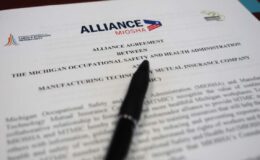 One of the most common questions during a member’s renewal process is “What is my experience modification? And how is it calculated?” Often this leads to another question that goes something like, “I had no losses last year but my experience mod went up, why?”
One of the most common questions during a member’s renewal process is “What is my experience modification? And how is it calculated?” Often this leads to another question that goes something like, “I had no losses last year but my experience mod went up, why?”
Let’s cover the big picture and the first question. The goal of the experience modification is to reward Michigan employers with lower than expected losses for their classification codes and payroll. The opposite is also true. Michigan employers with higher than expected losses in their rate classification receive a “debit” experience modification, which is a mod above 1.00. We have some members with experience modifications in the 60s, such as one today was .62. That employer at the very beginning of the rating process receives a 38% discount off of the standard rate. We also have a couple employers with experience modifications above 2.00. For these employers, their starting point in the rating process is twice the standard rate.
A critical part of controlling your workers’ compensation premium is controlling your losses. By the way, MTMIC is eager to help you with your loss control needs.
The second question is “I had no losses last year but my experience modification went up, why?” All Michigan Workers’ Compensation carriers are required to report payroll and loss data six months after every policy expires to the Compensation Advisory Organization of Michigan (CAOM). Therefore, the current year is “skipped” for one year in the experience modification calculation process. The prior three years are used. Said another way, the experience modification calculation uses the oldest three of the last four years. So we will see an employer who has a bad loss year for the current year, yet the experience mod can go down because it has not yet been included in the calculation. But it will be included the following year. Maybe a chart would help show this better.
I hope this chart and the explanation help clarify how the losses get plugged into your experience modification. Once the payroll is multiplied by the standard rate, it is adjusted for the experience modification of your firm. The experience modification has a direct impact on your premium and whether it goes up or down.
During the last year or so, we’ve also seen another factor come out of the experience modification process. We have had four MTMIC members where we had to write letters explaining the experience mod results of that particular member to one of the very large employers such as Ford, GM, and GE. We are finding that some of these largest employers have adopted rules where they will not allow a contract for work to be bid unless the employer has less than a 1.00 experience modification. It is not common practice yet, but three years ago we had none of these encounters, but 4 in the last 15 months. This is just another reason to manage the losses and your experience modification results.
That’s a quick thumbnail on the experience modification calculation. There are several factors that go into the calculation and I would be delighted to review those in detail for anyone who is interested in a deeper dive. Please call or email me at john.karlen@mtmic.com/blog.
Now put the numbers aside for a bit and enjoy early summer weather.





